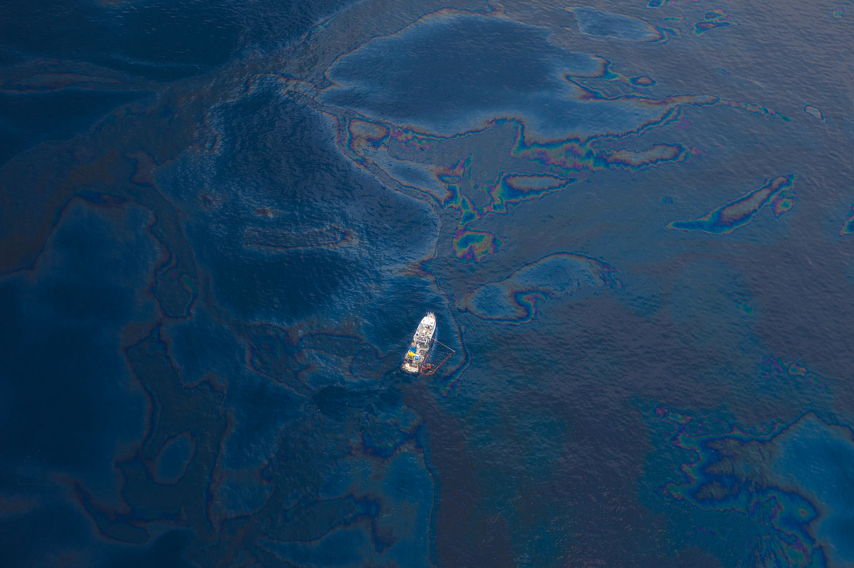On Oct. 28, $302 million was given to Gulf Coast states to be used for environmental restoration projects following the 2010 Deepwater Horizon oil spill. Florida received $73 million of these funds.
In April 2010, the Deepwater Horizon oil rig owned by BP Exploration & Production exploded and sank in the Gulf of Mexico. Four million barrels of oil flowed into the Gulf over a nearly three-month period.
The spill damaged the health of marine ecosystems, killed marine life, and left a footprint of oil that is still present to this day. It was the largest spill of oil in the history of U.S. marine oil drilling operations.
Florida, Alabama, Mississippi, Louisiana and Texas suffered environmental and economic damages in their coastal communities. Of Florida’s 790 miles of coastline, 177 miles experienced effects of the oil spill.
On Dec. 15, 2010, the United States filed a civil complaint in the Eastern District of Louisiana against BP Exploration & Production and several other defendants alleged to be responsible for the spill.
In April 2016, a consent decree, which is a settlement that resolves a dispute without the defendants having to admit liability, was approved by the court. The consent decree was between BP Exploration & Production, the United States, and the five Gulf Coast states that were affected.
As a result, BP Exploration & Production is required to pay over $20 billion. This was the largest settlement with a single party in U.S. federal law enforcement history.
The settlement funds were distributed to cover three main losses resulting from the spill: economic claims, natural resource damages, and RESTORE Act civil penalties.
In July 2012, in response to the Deepwater Horizon oil spill, Congress passed the Resources and Ecosystems Sustainability, Tourist Opportunities, and Revived Economies of the Gulf Coast States Act (RESTORE Act). The RESTORE Act created a Gulf Coast Restoration Trust Fund and the Gulf Coast Ecosystem Restoration Council as well as setting guidelines for use of the trust fund.
A part of the council’s duties is to create a comprehensive plan for restoration of the Gulf Coast region. The council works to “restore and protect the natural resources, ecosystems, fisheries, marine and wildlife habitats, beaches, coastal wetlands, and economy” in the area.
“I can’t overstate how important issues like this are to Florida,” said Noah Valenstein, secretary of the Florida Department of Environmental Protection. “Our environment here in Florida is the foundation for our economy, our way of life, and our sandy beaches.”
There are currently over 130 restoration projects that have been completed or are currently active in Florida. This includes improving water quality, planting dune vegetation, constructing beach infrastructure, recovering marine ecosystems, and collecting data to protect marine life.
The RESTORE Council approved an additional $73 million to be given to Florida. It will be used to fund approved restoration projects.
“This funding will go to the day-to-day work of water quality improvement that is necessary to ensure the protection of human health and the environment,” said Doug Benevento, U.S. Environmental Protection Agency’s Associate Deputy Administrator.
In addition to the current projects, there are more than 1,880 proposed restoration projects. The Florida Department of Environmental Protection allows individuals and organizations to submit project proposals that will aid the Gulf Coast’s restoration efforts.
Proposals have been submitted by conservation groups, water management districts, businesses, counties, universities, and hundreds of other organizations. The University of Florida has submitted numerous project proposals.
The RESTORE Council will review proposals and decide which projects to approve. Starting Nov. 16, these approved projects will be open for public comment.
Prior to the 2010 oil spill, there was a lack of complete scientific understanding of ocean currents, wind patterns and oil spills. According to National Geographic, the Deepwater Horizon oil spill provided an opportunity to expand scientific knowledge in these areas.
Much of the restoration projects in Florida focus on gathering much-needed research about the nature of the Gulf of Mexico, loss of marine habitats, the extent of oil damage, and more. Even after a decade, more information about the effects of the 2010 oil spill continues to come to light.
Featured image: A ship floats in spilled oil in the Gulf of Mexico following the Deepwater Horizon oil spill. Unmodified photo by Kris Krüg used under a Creative Commons license. (https://bit.ly/3hRHtmy)
Check out other recent articles from the Florida Political Review here.





